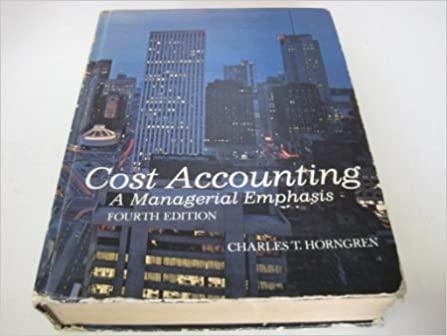Process Costs; Standard Costs; Analysis of Variances The Jammer Company uses standard costs and produces a chemical
Question:
Process Costs; Standard Costs; Analysis of Variances ‘The Jammer Company uses standard costs and produces a chemical from a secret formula. Material A is introduced at the start of the single process, while Material B is added when the conversion process is 80 percent completed. Conversion costs are applied uniformly throughout the process.
Standard costs per finished unit:
Materials:
A, five gallons @ 40¢ $ 2.00 B, one pound 10.00 Conversion costs:
Labor, 2 hours 5.00 Variable overhead* 1.00 Fixed overhead* 4.00 $22.00 “Applied as a percentage of standard direct-labor cost.
Beginning inventory in process, July 1, 19_1, consisted of 1,000 units, all 30 percent completed. Fifty-two thousand gallons of A were added during July. Twelve thousand pounds of B were added during July. Nine thousand units were completed. Two thousand units were still in process, 90 percent completed, at the end of July.
Actual costs incurred by the production department were as follows:
Material A, $26,000 Material B, $108,000 Direct labor, 22,000 hours @ $2.50 = $55,000 Variable overhead, $10,850 Fixed overhead, $47,800 Denominator activity is 12,000 finished units per month.
Expression of production in terms of equivalent units for:
. Material A 2. Material B . Conversion costs Give dollar amounts and use F or U to denote whether the following variances are favorable or unfavorable:
. Material A price variance (Assume that this company recognizes price variances for materials as they are used rather than as they are purchased.)
. Material A efficiency variance . Material B price variance . Material B efficiency variance . Labor-price variance . Labor-efficiency variance Variable-overhead spending variance . Variable-overhead efficiency variance Fixed-overhead spending variance Fixed-overhead denominator variance: l-01
Step by Step Answer:






